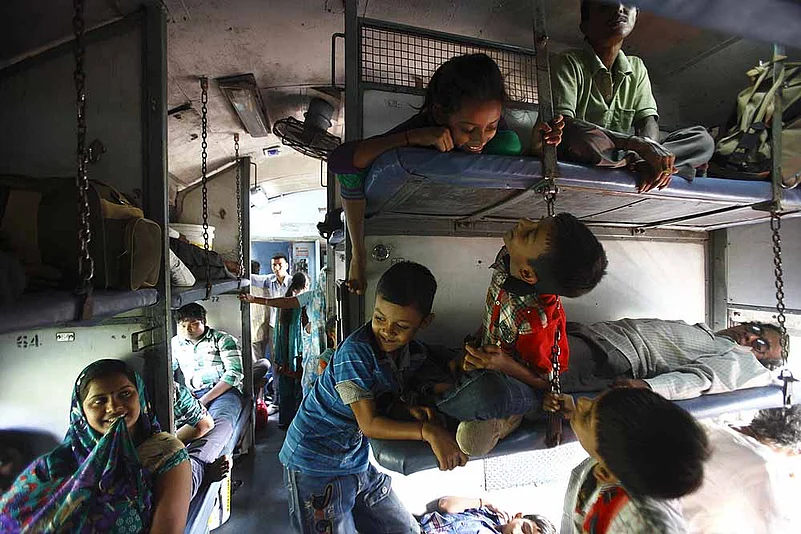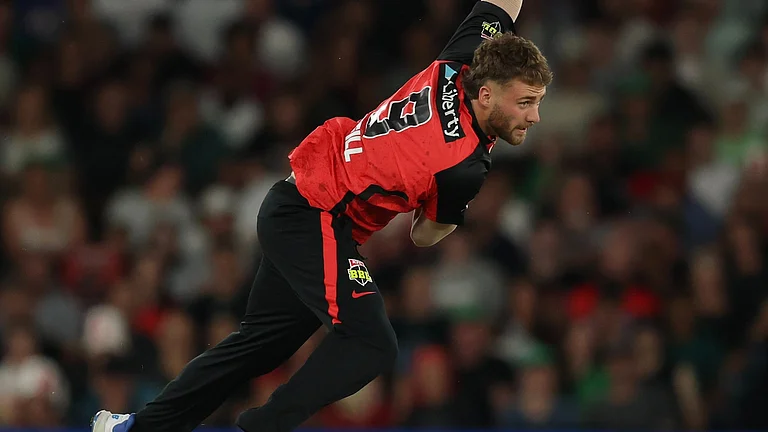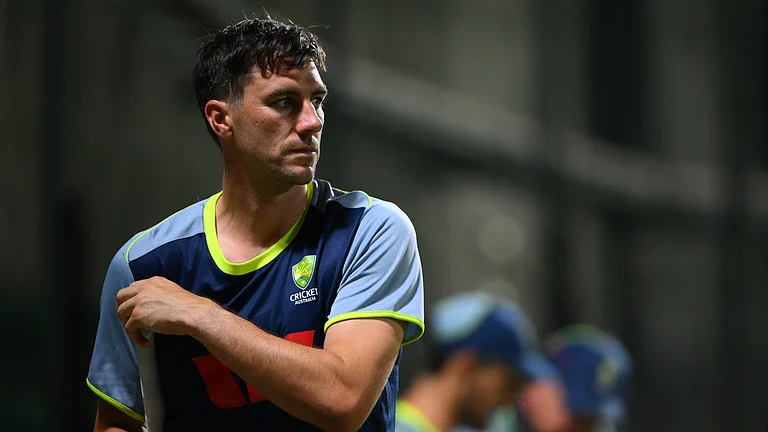The Fare Deal
Railways’ Move
- Hike in sleeper class fare by Rs 5-15
- AC fare hike by two per cent for fuel adjustment, impact is Rs 30-95
- 20-40 per cent rise in food prices in Rajdhani and Shatabdi
- Price of food items on all trains has gone up this year
- Freight rate hiked across the board by 1.7 per cent
Implication
- Negligible increase; train travel still cheaper than bus
- Fares of AC class inching closer to air fare
- So far the quality of food is nothing to write home about
- Choice is limited; efforts on to change, audit catering
- Expected to yield Rs 700 crore in six months
Further Reforms
- Selection of rail tariff regulatory authority members in process
- Rail energy management company being set up
- 4,000 km dedicated freight corridor planned under PPP mode
- Stopped buying expensive power; captive power plants being set up
- Fuel-efficient multi-genset loco tested; more to be manufactured.
***
It took the UPA’s railways ministry nine long years to take the politically bold step of raising fares, albeit nominally, in January 2013. Who would have imagined another price hike in the same year for fuel price adjustment? But that’s exactly what the UPA did—quietly—in October. It pushed through a small tariff increase (Rs 5 for sleeper class fare and 2 per cent for air-conditioned seats) to help meet the increasing diesel and power bills.
Suburban and unreserved coach passengers, who account for the bulk of India’s 23.2 million daily passengers, were spared the hike. Nonetheless, it was surprising that there was no protest from opposition parties this time to the UPA move, though its arrival had been forecast in this year’s rail budget. Political opposition within and outside the government had stonewalled rail fare hikes for many years despite input and operational costs having gone up and the railways struggling to execute long-pending projects.
So, are the political class and the common man finally getting used to the idea of the government gradually reducing its subsidy burden—to better manage its fiscal deficit—as it has been doing in the case of diesel and cooking gas? Or has the move gone unnoticed in the political heat and dust in the run-up to the assembly elections in several states and the general elections next year?
Politically, a key factor perhaps is that a Congress minister—Mallikarjun Kharge—is at the helm of affairs in the railway ministry since September last year, rather than a coalition party figure, as is usual. “The beauty of the railways is that it is very simple to raise fares but we don’t do it, and still perform our job with reasonable profit,” says railway board chairman Arunendra Kumar. “If the diesel price goes down, we will reduce fares, but if it goes up we will increase (fares). At least the system is in place.”
For context, remember the fate of former railway minister Dinesh Trivedi of Trinamool Congress. Just last year, he paid the price for laying out a blueprint for major railway reforms and suggesting a tariff hike (which was rolled back after his resignation). But now some of his forward-looking measures—including the setting up of a tariff regulatory authority—have found voice in the 2013-14 railways budget, say railway experts.
Shanti Narain, former member (traffic), railway board, calls the railways’ twice-yearly fuel adjustment move “a baby step”, but a significant one “given the past record”. However, he goes on to add, it addresses only the fuel component. “What is required is tariff readjustment.” Narain has long been stressing on the need to set up an independent tariff regulatory authority for a rational and transparent tariff structure unlike the current “ad-hocism, distortions and intolerable cross-subsidies. Passenger fares are being cross-subsidised to the tune of a whopping Rs 25,000 crore by freight rates, which are one of the highest.”
Fares apart, the railways have not been as reluctant to increase the price of food and beverages served aboard the trains. In the case of Rajdhani and Shatabdi, the increase is as much as 20-40 per cent. Of course, this too forms part of the fare. Clearly, these “extras” can cost a bit as the railways have lately been looking to outsource to improve service.
There are pressures, of course. Former railway board chairman J.P. Batra says that costs, including salaries and pensions of its large workforce, are rising by 8-9 per cent every year. “The railways need to improve efficiency and productivity to absorb 2-3 per cent of the rise in costs, otherwise the public will be paying for the inefficiency. The balance should in due course be passed on to the passengers. If the subsidy is to continue, it should be transparent,” he says.
Currently, due to the cross-subsidy, Indian Railway freight charges are 30-40 per cent higher than in other countries, including China, according to experts. This not only works to the disadvantage of exports, but also means higher costs for everything—from steel, cement to vegetables and other consumer products sold in the domestic market. Everyone is paying indirectly, even if it doesn’t manifest in the form of higher fares. Bus transport and airline tickets have become more expensive, leaving a majority of people dependent on railways despite complaints about poor hygiene and lack of facilities, particularly on long-distance trains.
On the face of it, the railways are clear about where they stand. “The rail sector is not able to go the way the road or aviation sector is going. We have not been market-driven but instead have social compulsions,” says Kumar. He stresses that the railways “resort to a lot of internal efficiencies and absorb a lot of the costs on our own”.
According to a former railway board member, who declined to be identified, there is considerable inefficiency in railways operations. Ergo, a mere fuel price adjustment is not going to make much of a difference unless there are greater overall technical and management inputs. In the case of passenger traffic, the fuel component is around 25 per cent while manpower costs are 52 per cent. In the case of freight, the fuel cost can go up to 30 per cent and manpower cost to around 44 per cent.
There are other inefficiencies as well. “Electrification is cheaper only if you have volumes. Passenger movement alone does not justify electrification on a particular route. There is no minimum benchmark of freight movement,” says a former railway board member.
As the railways now look to balancing of fares with a thrust towards public-private partnerships (PPP), outsourcing and FDI for pushing ahead with various pending projects, including the long-talked-about dedicated freight corridor to make 4,000 km of track, there is growing concern within the mammoth organisation. “We are against any reforms that will nudge railways towards privatisation. They are pushing railways in that direction with assured offtake of wagons, locomotives, coaches, etc, from private industries. What will happen to our railway production units?” asks Shiva Gopal Mishra, general secretary of the All India Railwaymen’s Federation.
That said, a rational increase in passenger fares, along with improved efficiency, would seem to be the call of the day. The railway chairman assures steps are being taken in that direction with a tariff regulatory authority and an energy management company in the offing. Does that mean political and bureaucratic bosses will take a side berth and let Indian Railways run more efficiently—crucially, without taking the privatisation route?


























